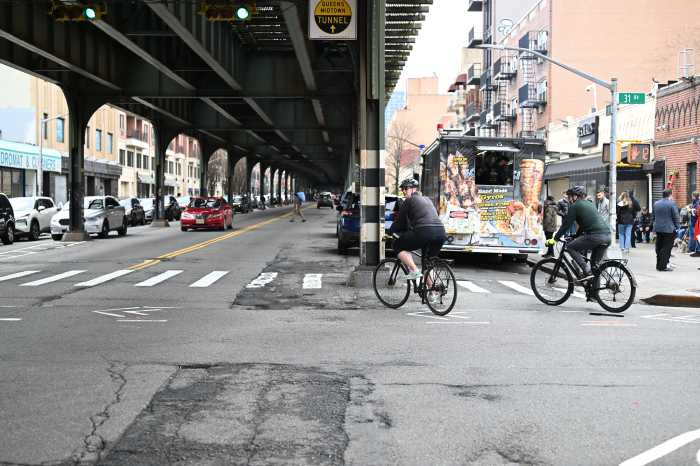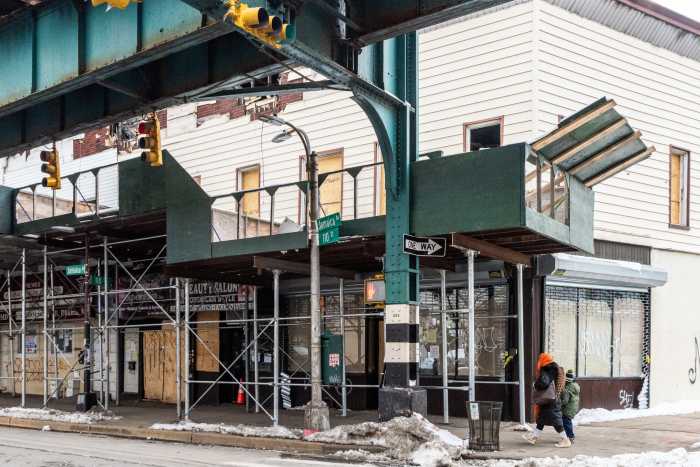By Bill Parry
The city has begun construction of 321 curbside rain gardens in Sunnyside, Maspeth and Ridgewood that will beautify neighborhoods, help clean the air and reduce pollution in Newtown Creek. When construction is completed later this year, officials say each rain garden will have the capacity to collect and absorb up to 2,500 gallons of stormwater when it rains.
Modeling shows that the 321 rain gardens, also known as bioswales, will capture an estimated 38 million gallons of stormwater each year, thereby reducing sewer overflows into Newtown Creek and improving the health of the waterway. In addition to the curbside rain gardens, six stormwater green streets will be built to utilize underused roadway areas to absorb stormwater.
Newtown Creek, which separates Queens and Brooklyn, is one of the nation’s most polluted waterways due to heavy industrial development along the banks of its 3.5-mile length. More than 50 oil refineries leaked an estimated 30 million gallons of spilled oil along with toxins from petrochemical plants, fertilizer and glue factories, and other industries beginning in the early 1800s.
It received Superfund designation in 2010 by the federal EPA.
“Cleaning up Newtown Creek is a priority for DEP and we are excited that shovels are in the ground to build rain gardens in the surrounding communities,” DEP Acting Commissioner Steven Lawitts said. “Not only will this $7.3 million investment green the streets and sidewalks of Maspeth, Sunnyside and Ridgewood, but by capturing the stormwater that would otherwise drain into the sewer system, we will reduce the amount of pollution that ends up in Newtown Creek.”
The DEP is funding the project and the construction is being managed by the city’s Department of Design and Construction. The rain gardens are built in city sidewalks and do not result in the loss of any parking spaces. They resemble standard street tree pits, except they vary in size and have curb cuts that allow stormwater to enter and overflow if it becomes saturated. During construction, the rain gardens are excavated to a depth of five feet and are then backfilled with layers of stone and engineered soil.
The layers contain void spaces that store the stormwater. To date, nearly 1,000 rain gardens have been built in the city, with 1,500 currently under construction and thousands more planned for the next several years.
DEP conducted extensive outreach in the Newtown Creek watershed area including meeting with City Council members, Community Boards 2 and 5, the Newtown Creek Alliance and numerous other neighborhood and environmental organizations.
“DDC is proud to partner with DEP to provide a stormwater management system that reduces the risk of sewer overflows and beautifies neighborhoods by funneling water to street gardens,” DDC Commissioner Feniosky Peña-Mora said. “In keeping with Mayor de Blasio’s vision for a resilient and sustainable city, this project is certainly one that Queens residents and all New Yorkers can take pride in.”
Reach reporter Bill Parry by e-mail at bparr



































